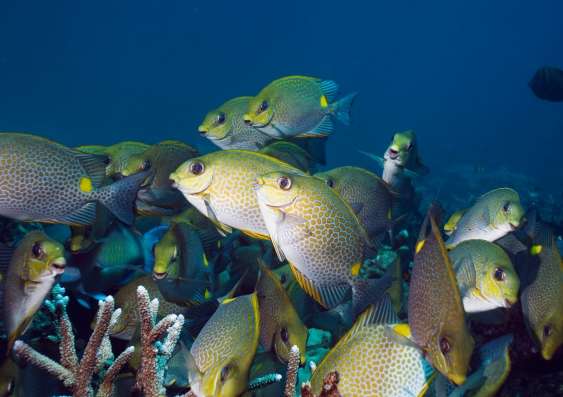Invasive fish threat to kelp forests

Seaweed-eating fish are becoming increasingly voracious as the ocean warms due to climate change and are responsible for the recent destruction of kelp forests off the NSW north coast near Coffs Harbour, research shows.
The study includes an analysis of underwater video, covering a 10-year period between 2002 and 2012, during which the water warmed by 0.6 degrees.
"Kelp forests provide vital habitat for hundreds of marine species, including fish, lobster and abalone," says study first author Dr Adriana Vergés of UNSW and the Sydney Institute of Marine Science.
"As a result of climate change, warm-water fish species are shifting their range and invading temperate areas. Our results show that over-grazing by these fish can have a profound impact, leading to kelp deforestation and barren reefs.
"This is the first study demonstrating that the effects of warming in kelp forests are two-fold: higher temperatures not only have a direct impact on seaweeds, they also have an indirect impact by increasing the appetite of fish consumers, which can devour these seaweeds to the point of completely denuding the ocean floor.
"Increases in the number of plant-eating fish because of warming poses a significant threat to kelp-dependent ecosystems both in Australia and around the globe," she says.
The study has been published in the journal Proceedings of the National Academy of Sciences. The team recorded underwater video around August each year at 12 sites along a 25km stretch of coast adjacent to the Solitary Island Marine Park off northern NSW.
During this period, kelp disappeared completely from all study sites where it was initially present. At the same time the proportion of tropical and subtropical seaweed-eating fish swimming in these areas more than tripled. Grazing also intensified, with the proportion of kelp with obvious feeding marks on it increasing by a factor of seven during the decade.
"We also carried out an experiment where we transplanted kelp onto the sea floor.We found that two warm-water species – rabbitfish and drummer fish – were the most voracious, eating fronds within hours at an average rate of 300 bites per hour," says Dr Vergés.
In Australia, kelp forests support a range of commercial fisheries, tourism ventures and recreation activities worth more than $10 billion per year. "The decline of kelp in temperate areas could have major economic and management impacts," says Dr Vergés.
The video footage used in the study from 2002 onwards was originally collected for a very different research project – to measure fish populations inside and outside sanctuary zones in a marine park. But the team realised it could also be used to determine whether kelp was present in the background or not.
More information: Adriana Vergés et al. Long-term empirical evidence of ocean warming leading to tropicalization of fish communities, increased herbivory, and loss of kelp, Proceedings of the National Academy of Sciences (2016). DOI: 10.1073/pnas.1610725113
Journal information: Proceedings of the National Academy of Sciences
Provided by University of New South Wales




















